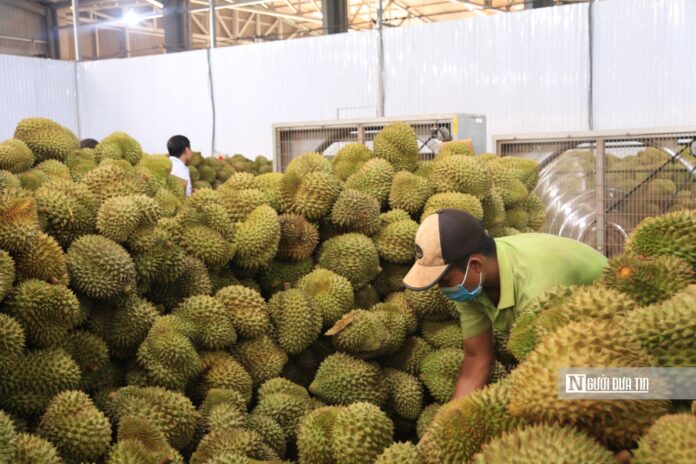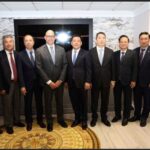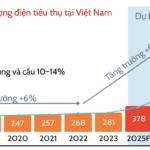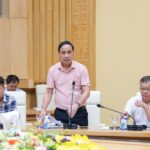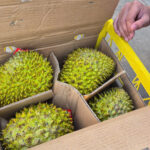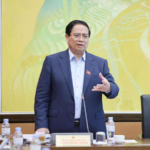Tracing the Origins of Cadmium and Orange Dye Residues
In 2024, durian exports reached approximately $3.2 billion, accounting for nearly half of the country’s fruit and vegetable exports. This record-breaking figure includes over 90% of Vietnam’s durian exports to the Chinese market.
Dak Lak province currently boasts the second-highest durian yield in the country (361,986 tons in 2024, an increase of over 60,000 tons compared to 2023, with an expected yield of over 400,000 tons in the 2025 season). The total durian-cultivated area in the province is approximately 38,800 hectares, the largest in the country, accounting for more than 50% of the fruit tree area.
However, since the beginning of 2025, durian export activities of domestic enterprises to China have faced challenges due to intensified inspections by the Chinese side for pesticide residues and the requirement for heavy metal testing, including cadmium and orange dye.
As a company specializing in durian exports for many years, Mr. Vu Quang Phuc, Director of Trung Bao Tin Group Joint Stock Company, shared: “In the process of purchasing and exporting durian so far, we have encountered numerous difficulties, and the volume of exported goods is not significant.”
Firstly, it is challenging to select growing areas free from cadmium and pests as stipulated in China’s Protocol. The current cultivated area cannot meet the demands of businesses.
Moreover, when a suitable growing area is identified, the yield at harvest may not be sufficient for export packaging.
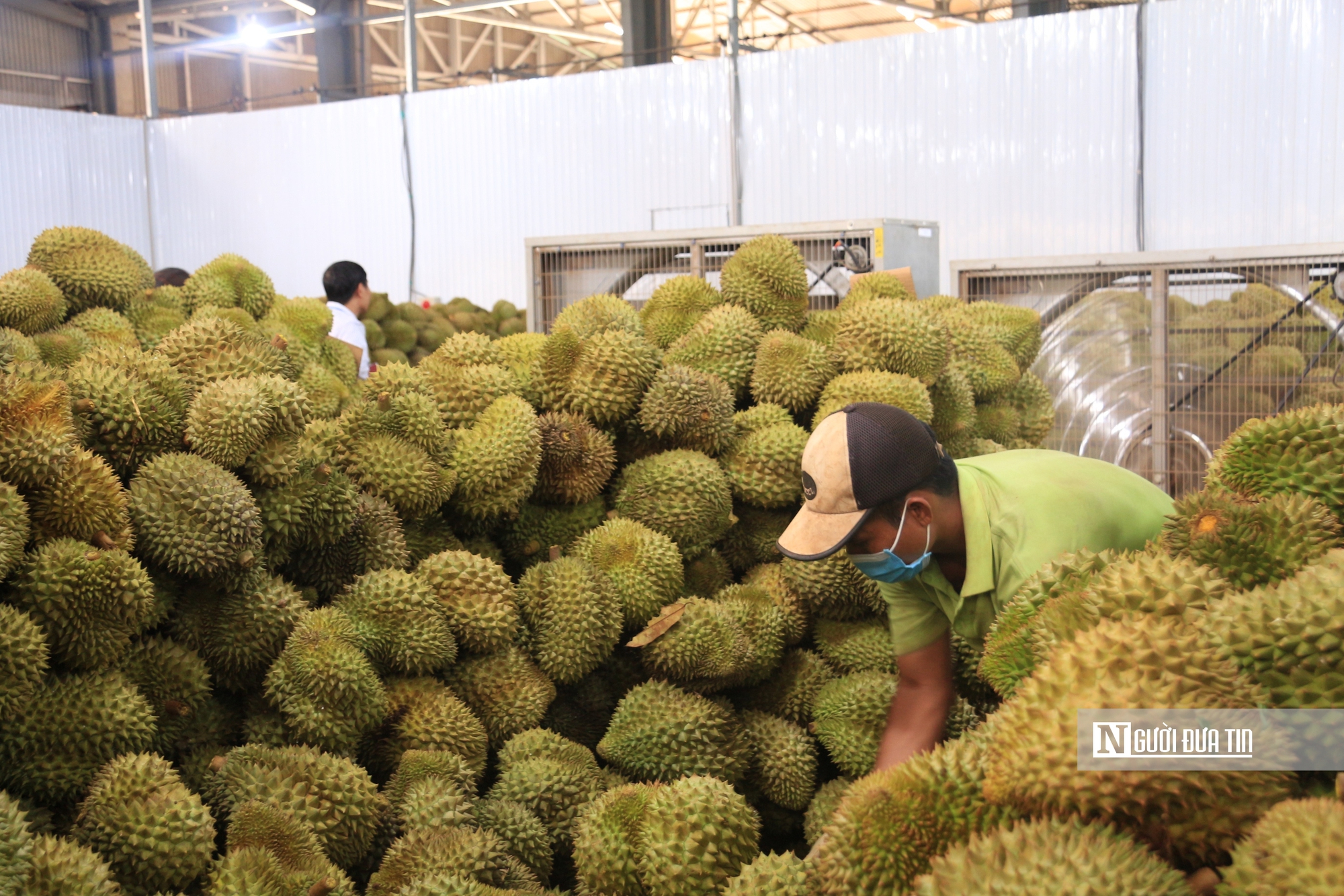
Dak Lak province has 23 packaging facilities for durian that have been approved by the General Administration of Customs of China.
Given this situation, Mr. Phuc hopes for government support for farmers and cooperatives to register additional growing areas so that businesses can accurately source from registered regions.
Mr. Phuc also affirmed: “We have not used any color-enhancing chemicals containing orange dye, but there have been isolated cases where our products were found to contain orange dye at the China border. Although the percentage is low, China still rejects these shipments. We highly appreciate the support from the state management agencies and testing units to identify and clarify the causes.”
Furthermore, the durian export process entails extensive procedures and lengthy durations. Some shipments take up to a month to clear, resulting in significant deterioration by the time they are approved for entry.
Cautionary Tale of Unsustainable Farming Practices
Explaining the reasons behind the presence of orange dye and cadmium in durian, Mr. Nguyen Thien Van, Vice Chairman of the People’s Committee of Dak Lak province, stated in Document No. 3448 dated April 10, 2025: “The detection of cadmium in durian is attributed to soil contamination and the long-term use of fertilizers and pesticides containing cadmium. Meanwhile, the presence of orange dye is due to the use of color enhancers by some enterprises during the preliminary processing stage to make the exported durian look more attractive with a bright yellow color…”
“Some growing areas and packaging facilities use chemicals not on the permitted list, prohibited chemicals, or substances containing orange dye. Consequently, certain durian export batches have been warned for violating food safety and plant quarantine regulations of the importing country…”
Dr. Phan Viet Ha, Vice Director of the Tay Nguyen Institute of Science and Technology for Agriculture and Forestry, shared that previous studies, mainly from international sources, have identified various sources of orange dye, including soil, fertilizers (especially phosphate fertilizers), and excessive phosphate fertilization, which can result in high orange dye residues.
“Further research is needed to determine the exact sources of cadmium and orange dye residues in the soil of the Central Highlands. Currently, there is no standard procedure to address this issue. Even globally, it is acknowledged that these problems can only be tackled through sustainable and long-term development approaches,” emphasized Dr. Phan Viet Ha.
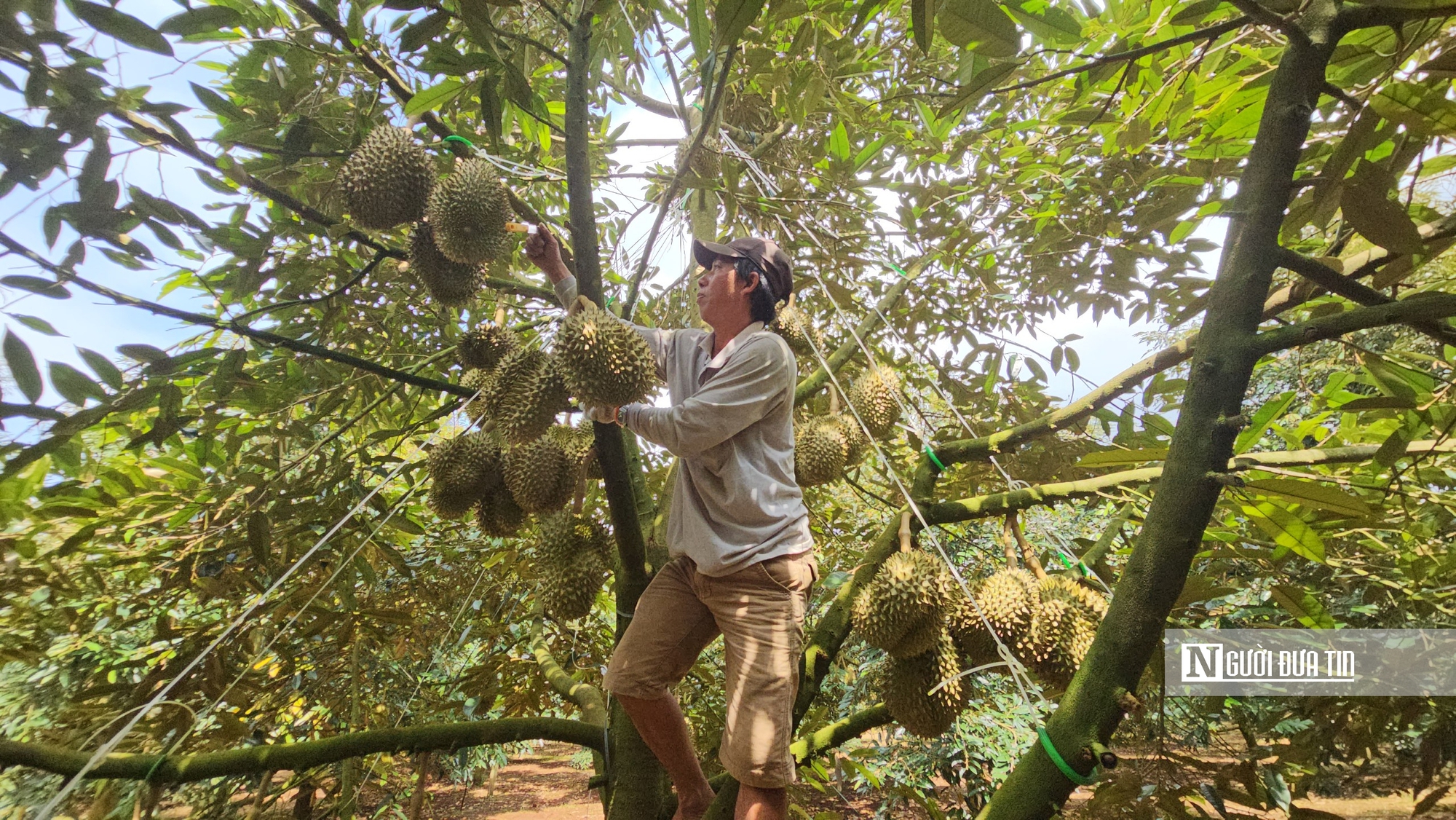
It’s time for durian farmers to embrace sustainable production methods, diversify their products, and cultivate in ecologically suitable regions.
According to Dr. Phan Viet Ha, durian is a highly profitable crop in Dak Lak province, but it also carries significant risks.
Therefore, it’s time for durian farmers to embrace sustainable production methods, diversify their products, and cultivate in ecologically suitable regions. By leveraging natural advantages, they can produce cost-effective goods, enhancing profitability. Emphasizing short-term high yields should be avoided.
Moving forward, the Tay Nguyen Institute of Science and Technology for Agriculture and Forestry will collaborate with the Durian Association to establish a long-term procedure.
“With a long-term vision, we aim to work with the Durian Association of Dak Lak province to develop technical standards encompassing cultivation, harvesting, and export practices. This will enable us to provide synchronized technical packages tailored to different ecological regions, ultimately ensuring sustainable development and consistent product quality that meets the technical requirements of importers,” informed Dr. Phan Viet Ha.
In a conversation with Nguoi Dua Tin , Mr. Vu Duc Con, Chairman of the Durian Association of Dak Lak province, mentioned that China, the largest importer of durian, is tightening technical requirements related to pesticide residues, food safety, and hygiene.
To overcome these increasingly stringent market demands, science and technology are the key. The Association has signed a cooperation agreement with the Tay Nguyen Institute of Science and Technology for Agriculture and Forestry to research and transfer technical advances in durian cultivation for the 2025–2030 period.
“We will organize a sampling plan to assess the situation of cadmium and orange dye contamination throughout the province to pinpoint the sources of these residues in our products. In the long term, we must establish provincial-level standard criteria to proactively control the quality of our products. Achieving this grand goal requires significant time, resources, and the involvement of the community, authorities, and specialized agencies,” shared Mr. Con.
On May 20, 2025, the Government Office issued Document No. 4446/VPCP-NN conveying the direction of Deputy Prime Minister Tran Hong Ha regarding media reports on “Durian still struggling with orange dye issues.” The Deputy Prime Minister assigned the Ministry of Agriculture and Rural Development to study the information mentioned in the press, proactively direct, and handle it according to their functions, tasks, and authority.
“Strengthening Strategic Collaboration Between Vietnam and Leading US Corporations”
The discussions with leading corporations such as Excelerate Energy, Lockheed Martin, SpaceX, and Google have paved the way for new strategic collaborations between Vietnam and the United States. These engagements have outlined key areas of cooperation in the fields of energy, aerospace, technology, and telecommunications.
“Securing Energy Independence and Joining the Global Value Chain: The Case for LNG Development”
“Vietnam is facing an ever-growing energy demand to fuel its economic growth and industrialization goals. The utilization of liquefied natural gas (LNG) emerges as a pivotal solution, offering not just energy security but also a pathway towards cleaner energy sources. LNG presents Vietnam with an opportunity to partake in the global LNG value chain, thereby ensuring a sustainable and secure energy future.”
“In Extraordinary Times, Extraordinary Measures Are Needed”
In challenging times, developed nations opt for conservative growth targets. To buck this global trend and achieve ambitious growth, we require innovative solutions. Prime Minister Pham Minh Chinh asserts that “in these extraordinary times, we must adopt extraordinary measures, adapting with agility and efficiency.”

